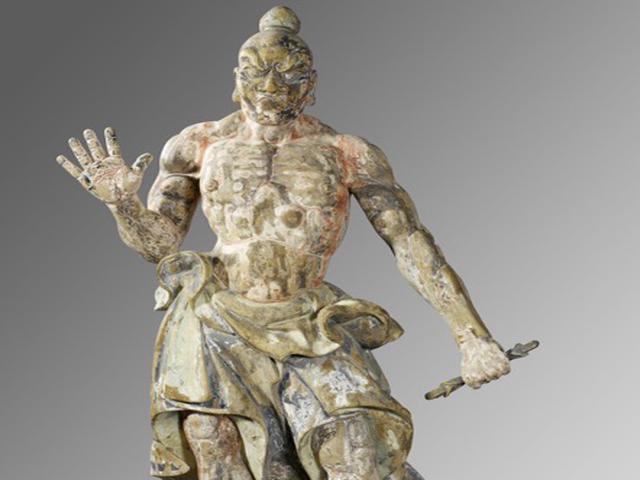Two temple guards

The two temple guards, also known as Niō in Japanese, are a stunning example of Buddhist sculpture from the 14th century. These imposing figures were traditionally placed at the entrance of Japanese Buddhist temples to ward off evil spirits and protect the sacred space within. Standing tall and proud, the guards hold a vajra in their hands, a symbolic weapon used to crush ignorance and bring enlightenment to those who enter the temple. Their open and closed mouths represent the beginning and end of the Japanese alphabet, symbolizing the totality of knowledge that awaits those who pass through their watchful gaze.
Crafted with incredible detail and precision, the Niō sculptures showcase the artistic skill and craftsmanship of Japanese sculptors during the Middle Ages. Using joined and hollowed pieces of wood, the sculptors were able to create larger-than-life statues with dynamic poses and expressive faces. The intense and almost terrifying expressions of the guards add to their mystique and power, instilling a sense of awe and reverence in those who encounter them.
As you approach the entrance of the temple guarded by these formidable figures, you can't help but feel a sense of respect and admiration for the rich cultural and spiritual heritage they represent. The Niō stand as silent sentinels, watching over the temple and its visitors with unwavering dedication and strength. Their presence is a reminder of the deep-rooted traditions and beliefs that have shaped Japanese art and culture for centuries.
Visitors who pass through the doors flanked by the Niō are said to receive the blessings of knowledge and enlightenment, embarking on a journey of discovery and spiritual growth. The guardians serve as a bridge between the physical world and the spiritual realm, guiding travelers on their quest for inner peace and understanding. In a world filled with chaos and uncertainty, the Niō stand as beacons of hope and protection, offering solace and inspiration to all who seek their guidance.
© ChatGPT 3.5